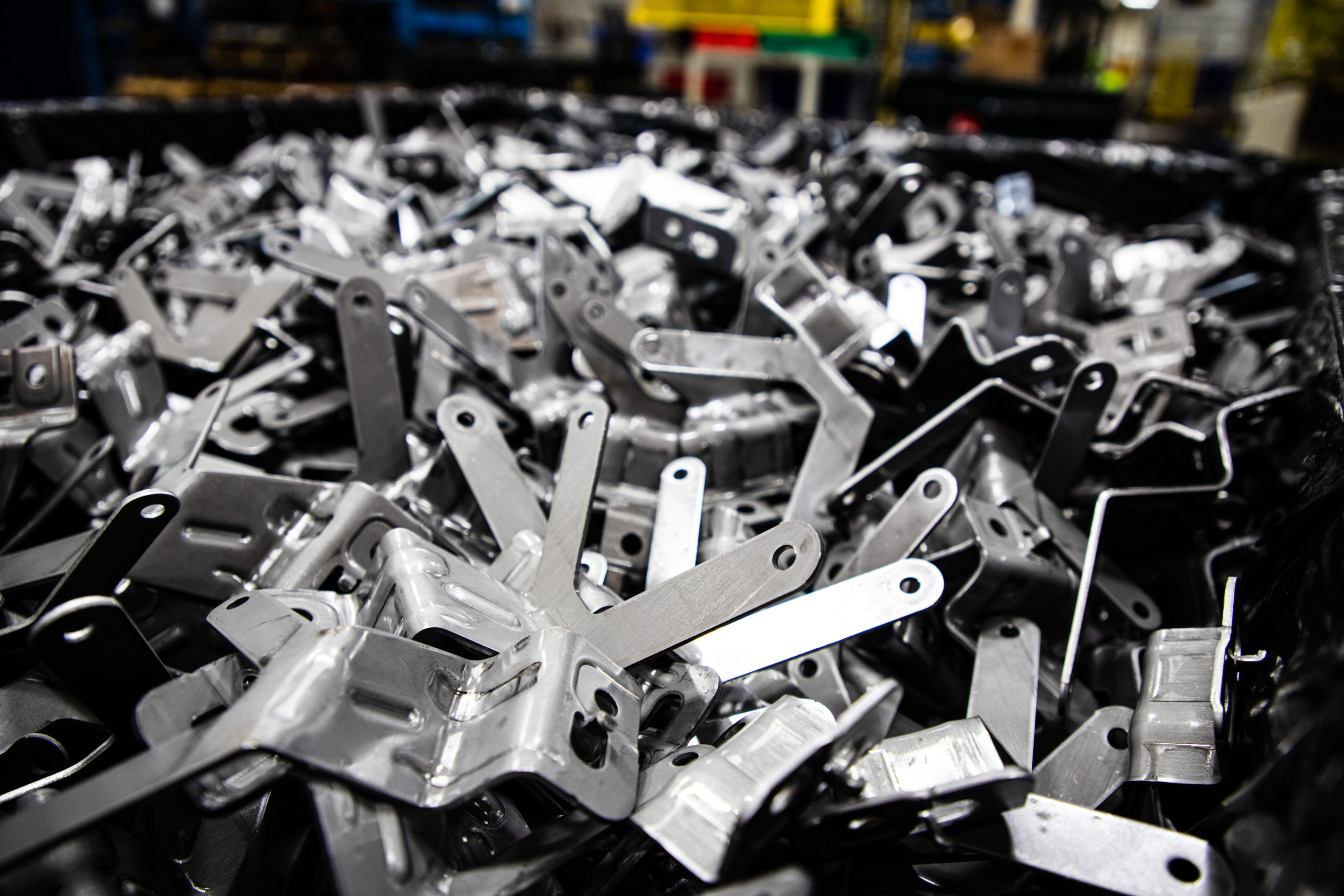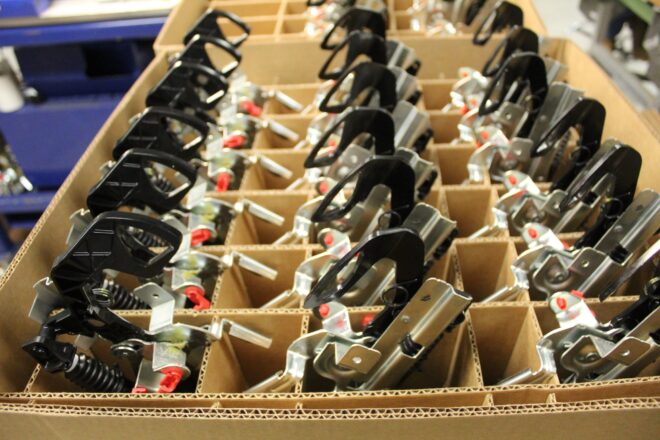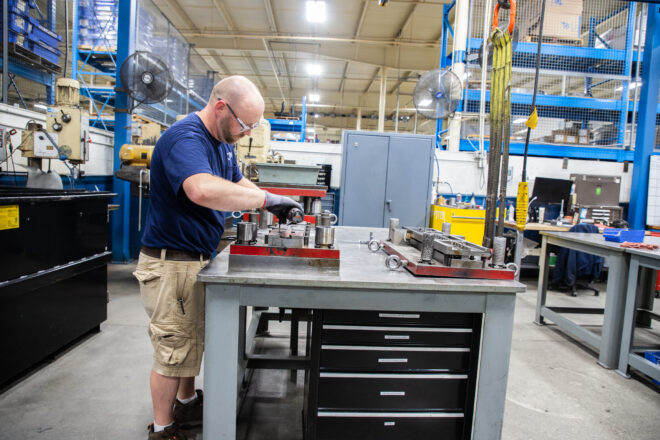Written by an Apex Team Member
Are you familiar with metal stamping? If not, it can be a highly technical process that requires complex engineering. While it is a complex process, it is used frequently to manufacture products that we use daily. Metal stamping involves many different metal forming processes such as blanking, punching, bending, and piercing. Manufacturers should learn the fundamentals of metal stamping so they can avoid costly errors, understand the expectations for costs and lead times, and receive the highest quality components. Apex has created a guide to give you a general overview of metal stamping so you and your team can make informed decisions about the products you manufacture.
Most Products Involve Some Form Of Metal Stamping
Every consumer had come in to contact with some type of metal stamping. Whether it is a spring within your desk chair or a spring within a household mop, the results of metal stamping are everywhere. The basics of metal stamping can work across most industries. The simple knowledge of what metal stamping is, how it works, and what it is used for is foundational for product development. As an OEM, purchaser, architect, or manufacturer, you can gain an advantage that allows you to process and prioritize efficiently.
Summarizing The Metal Stamping Process
The metal stamping process is broken into a few parts: blanking, piercing and bending. Each of these completes a specific function on the metal. Let’s take a deeper look into these:
Blanking: This is the first step in the process. It involves cutting out the rough shape of the metal component. You want to make sure this stage is streamlined. Since it is an initial stage, you can face problems like burrs. These are pieces of metal that remain attached to a workpiece. They are often a sign of poor work, so you want to minimize these as much as possible to avoid the costs associated with removing them in a secondary process.
Piercing: This step in the process utilizes a tool that puts holes into a workpiece. The hole is made either two ways, puncturing or machining. Puncturing involves pushing through the metal to create it, while machining involves using a drill. At this stage, there are many factors that you need to consider. For example, edge to hole spacing or the web refers to the distance between the created hole and the edge of the workpiece. If the hole is too close to an edge, the metal will bulge affecting the integrity of the workpiece.
Bending: The final stage in the process, bending involves shaping the workpiece until it is in the final desired shape. The metal stamping process is linear, so comprehensive work will take bending into consideration at the earlier stages of the process. You want to keep extra material on the workpiece, so you can shape the metal without affecting the prior work. For example, without adequate material between a bend and a pierced hole, the bend can warp the hole, rendering it useless. You can also have burrs, mismatched cutes/bends, and stamped edges that all generate high costs to fix at the end of the process.
Experts Can Ensure Your Metal Stamping Is Done Correctly.
As we stated in the previous section, metal stamping is a linear process. Each step requires a technical perfection to arrive at a finalized product. A mistake at an early stage can lead to a costly secondary process or a complete rework of a workpiece. Thankfully, while the process is highly technical, quality control is possible with a team of qualified engineers.
At Apex Spring and Stamping, our team of expert engineers will plan out the metal stamping process for you step by step. This is used as a roadmap that you can utilize, which includes the necessary measurements and instructions needed to arrive at a high-quality product.
You may ask, “I need a highly customized part. Can engineers still help?” The answer is yes. At Apex Spring and Stamping, we utilized 3D printing solutions to bring your vision to life before you even begin the metal stamping process.
Using our 3D modeling and printing software, we can identify problem areas before you encounter them in the process. Not only can we identify problems, but we can also use. The tool to streamline your product and figure out how to maximize the raw material to save you money in the long run. The critical aspect for saving on costs is technical planning, and the engineers are Apex can help develop yours.
If You Sacrifice Planning, You Can Expect Higher Costs.
Metal Stamping is very competitive in costs. If a company is hindered by a high costs, It can be a direct result of a miscalculation or poor process planning. Unfortunately, because of the complexities in the process and its linear structure, one small mistake can lead to costly secondary processes to correct it. Reaching out to the qualified engineers at Apex is your best option to plan out your product manufacturing thoroughly.




